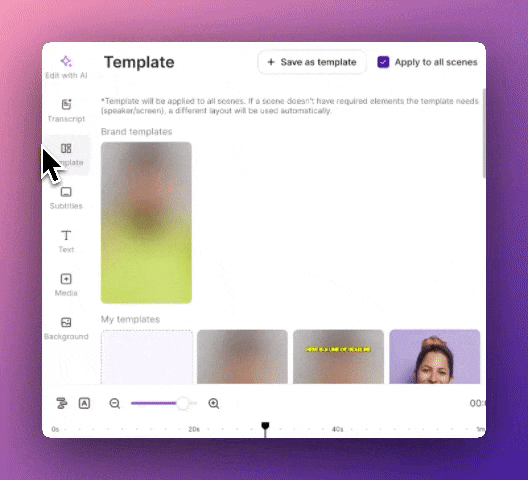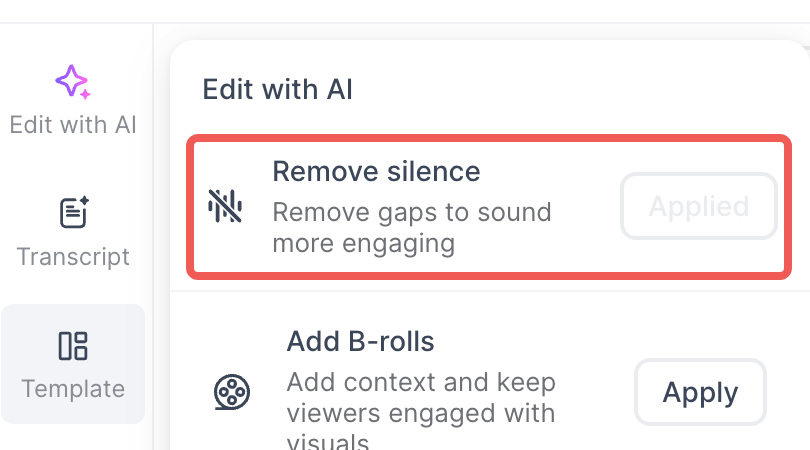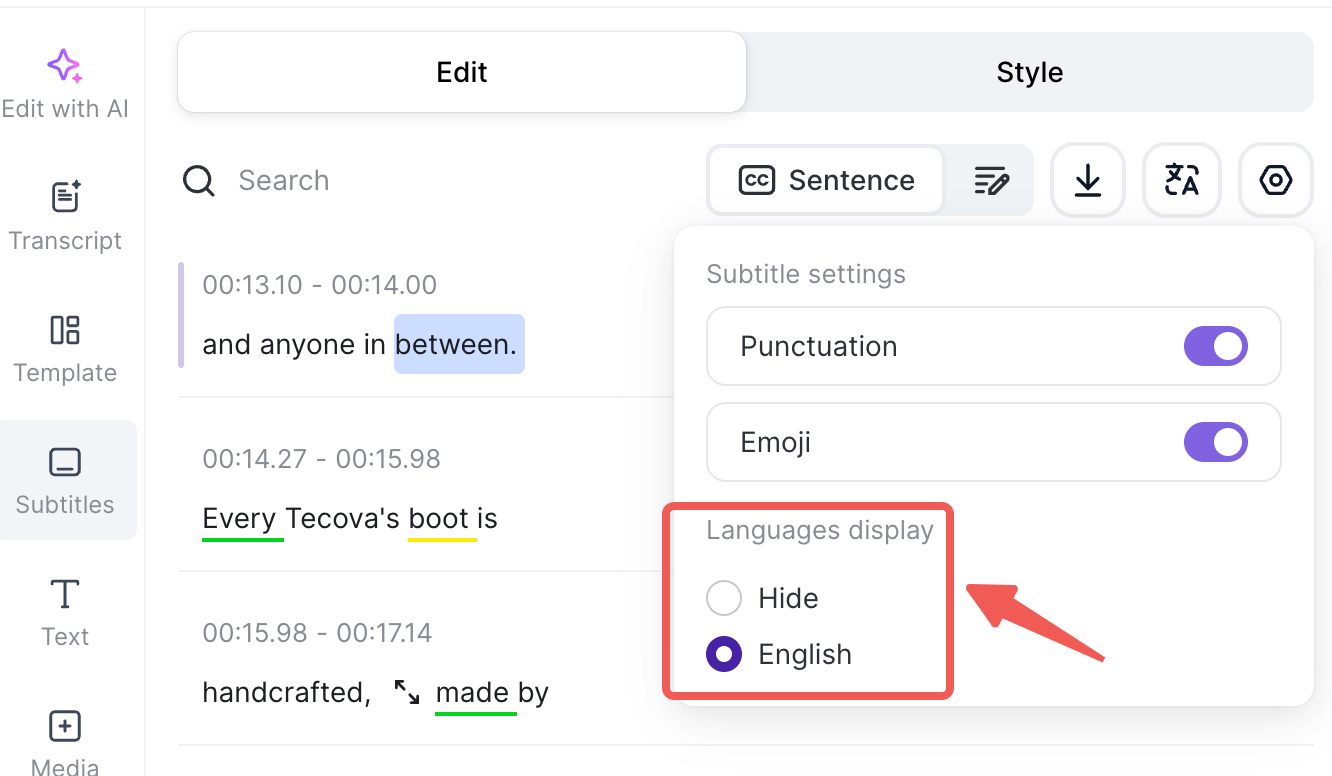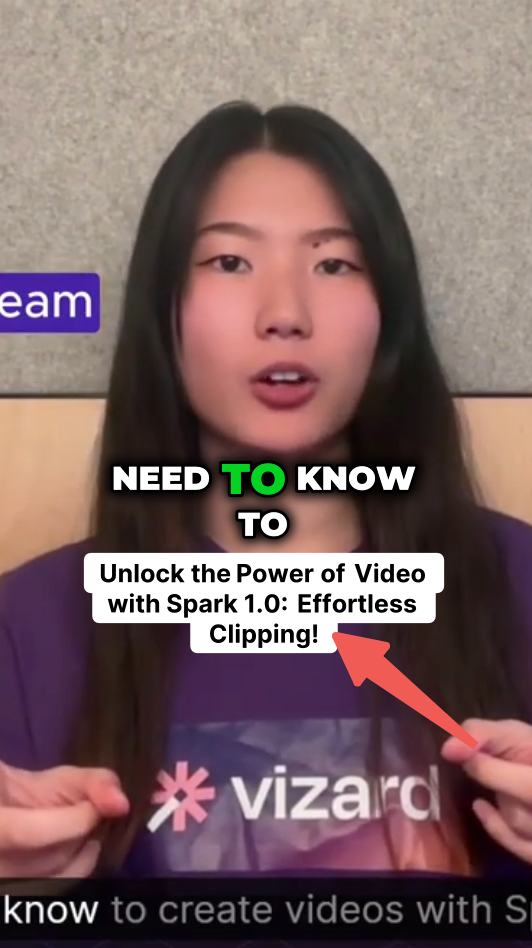Advanced Options
Explore optional parameters you can use to customize and fine-tune your API requests. These settings give you greater control and flexibility depending on your use case.
Set Aspect Ratio
The aspect ratio of a video determines the width-to-height proportion of the frame. Choosing the right ratio is essential to ensure your clips look good on the platforms you’re targeting.
The ratioOfClip parameter controls the output video shape for all generated clips. You can choose one format per request.
🔢 Parameter Values and Meanings
| Parameter | Value | Aspect Ratio | Best For |
|---|---|---|---|
| ratioOfClip | 1 (default) | 9:16 (Vertical) | TikTok, Instagram Reels, Shorts |
| 2 | 1:1 (Square) | Instagram Feed, Facebook Feed | |
| 3 | 4:5 (Portrait) | Instagram Feed (optimized height) | |
| 4 | 16:9 (Horizontal) | YouTube, LinkedIn, Twitter |
Usage Examples
- ✅ ratioOfClip: 1 → Generates vertical mobile-friendly videos, ideal for TikTok or YouTube Shorts.
- ✅ ratioOfClip: 4 → Creates widescreen clips perfect for YouTube or Twitter.
- ✅ ratioOfClip: 2 → Makes square videos that maintain visibility in Instagram or Facebook feeds without cropping.
Apply a Template
The templateId parameter allows you to apply a custom template to the generated clips. Templates can be created in the Vizard web interface that control:
- Subtitle font, size, and color
- Headline style and positioning
- Logo placement
- Branding elements
- Background layers, motion, and transitions
The template ratio must match the
ratioOfClipparameter. Both personal templates and those in the Brand Kit are supported.
🛠️ Where to find your templateId?
- Log in to your Vizard account.
- Open video editor by clicking on the 'Edit' button of any video clip.
- Switch to 'Template' tab.
- Hover over your desired template and copy its template ID.
- Paste it into your API request.

Remove Silence and Filler Words
The removeSilenceSwitch parameter controls whether silent gaps and filler words (like “um”, “uh”) are removed from your final clips. When enabled, Vizard will automatically trim unnecessary pauses and filter filler words from the final clips for a sharper and more polished output.
This function works the same as it does in the video editor.

This is especially useful for:
- ✅ Interview or podcast-style videos
- ✅ Long monologues with natural pauses
- ✅ Clips meant for fast-paced social platforms
🔢 Parameter Values and Meanings
| Parameter | Value | Remove silence? |
|---|---|---|
| removeSilenceSwitch | 0 (default) | No |
| 1 | Yes |
The “remove silence” option is turned off by default, as removing too many pauses can make the final video feel choppy or glitchy.
Set Maximum Number of Clips
Parameter maxClipNumber sets the maximum number of clips to return from a long video (range: 1 to 100).
This does not control the exact number of clips—only the upper limit. If this parameter is not included in your request, all clips will be returned.
For example, if you upload a 1-hour video and the system generates 40 clips, setting maxClipNumber to 10 will return only the top 10 clips, ranked by viral score.
Setting a smaller number can help speed up the response time.
Include Relevant Topics
Use the keywords parameter to let AI only clip some specific moments or topics. For example, write an instruction here like "Find where Sam talks about GPT-5" or "Get moment of Ronaldo's shot" or "Give me a scene where an sea otter sees a hamburger", our model will return clips directly align with this instruction.
Please note that this parameter is optional, no need to set it except you only want some specific parts from the original video. When this parameter is set, our model will only return directly aligned and specific focused clips, normally generate less number of clips than this parameter is not set. If our AI can not find clips which are strictly aligned with your instruction, no clip will be returned.
This feature is also available on web interface.

Example:
"keywords": "Find where Sam talks about GPT-5"
Show Subtitles
Use the subtitleSwitch parameter to control whether subtitles are displayed in the final clips.
By default, this is set to 1, meaning subtitles are turned on.
- Set to 1 → Show subtitles (default)
- Set to 0 → Hide subtitles
This setting is also available in the web interface.

Enable/disable Auto Emoji

Use the emojiSwitch parameter to control whether auto emoji in subtitles is enabled or not.
By default, this is set to 0, meaning this function is turned off.
- Set to 1 → Auto emoji enabled
- Set to 0 → Disable emoji in subtitles (default)
This setting is also available in the web interface when uploading a video.

Enable/disable Highlight Keywords
Use the highlightSwitch parameter to control whether auto highlight keywords function in subtitles is enabled or not.
By default, this is set to 0, meaning this function is turned off.
- Set to 1 → Auto highlight keywords enabled
- Set to 0 → Disable highlight keywords in subtitles (default)
This setting is also available in the web interface.

Auto add B-rolls
Use the autoBrollSwitch parameter to enable auto B-roll function. By default, this is set to 0, meaning no B-rolls will be added to clips generated from your uploaded long video.
- Set to 0 → Disable auto B-roll (default)
- Set to 1 → Enable auto B-roll
Show an AI-Generated Headline
Use the headlineSwitch parameter to control whether an AI-generated headline (also called a hook) is added to your clip.
The headline appears as a text overlay in the first 3 seconds to grab viewers’ attention and boost engagement.
- Set to 1 → Show headline (default)
- Set to 0 → No headline
Example of a headline.

Name Your Project
Use the projectName parameter to set a custom name for the clipping project created from your submitted video.
If not provided, the default name will be: the filename of your uploaded video, or the title of a YouTube video (if submitting via YouTube link).
Example Request
Below is an example request using some of the optional parameters introduced above. None of the parameters on this page are required—feel free to choose the ones that best fit your use case.
curl -X POST https://elb-api.vizard.ai/hvizard-server-front/open-api/v1/project/create \
-H "Content-Type: application/json" \
-H "VIZARDAI_API_KEY: YOUR_API_KEY" \
-d '{
"lang": "en",
"preferLength": [0],
"videoUrl": "https://www.youtube.com/watch?v=OqLfw-TzzfI",
"videoType": 2,
"ratioOfClip": 1,
"templateId": 52987165,
"removeSilenceSwitch": 0,
"maxClipNumber": 10,
"keyword": "AI, spark, vizard",
"subtitleSwitch": 1,
"headlineSwitch": 1,
"projectName": "Introducing Spark 1.0 - Clip any video with a simple prompt now!"
}'import requests
url = "https://elb-api.vizard.ai/hvizard-server-front/open-api/v1/project/create"
headers = {
"Content-Type": "application/json",
"VIZARDAI_API_KEY": "YOUR_API_KEY"
}
data = {
"lang": "en",
"preferLength": [0],
"videoUrl": "https://www.youtube.com/watch?v=OqLfw-TzzfI",
"videoType": 2,
"ratioOfClip": 1,
"templateId": 52987165,
"removeSilenceSwitch": 0,
"maxClipNumber": 10,
"keyword": "AI, spark, vizard",
"subtitleSwitch": 1,
"headlineSwitch": 1,
"projectName": "Introducing Spark 1.0 - Clip any video with a simple prompt now!"
}
response = requests.post(url, headers=headers, json=data)
print(response.status_code)
print(response.json())import axios from 'axios';
const url = 'https://elb-api.vizard.ai/hvizard-server-front/open-api/v1/project/create';
const headers = {
'Content-Type': 'application/json',
'VIZARDAI_API_KEY': 'YOUR_API_KEY'
};
const data = {
lang: 'en',
preferLength: [0],
videoUrl: 'https://www.youtube.com/watch?v=OqLfw-TzzfI',
videoType: 2,
ratioOfClip: 1,
templateId: 52987165,
removeSilenceSwitch: 0,
maxClipNumber: 10,
keyword: 'AI, spark, vizard',
subtitleSwitch: 1,
headlineSwitch: 1,
projectName: 'Introducing Spark 1.0 - Clip any video with a simple prompt now!'
};
axios.post(url, data, { headers })
.then(res => {
console.log(res.status);
console.log(res.data);
})
.catch(err => {
console.error(err.response?.data || err.message);
});Updated 2 months ago